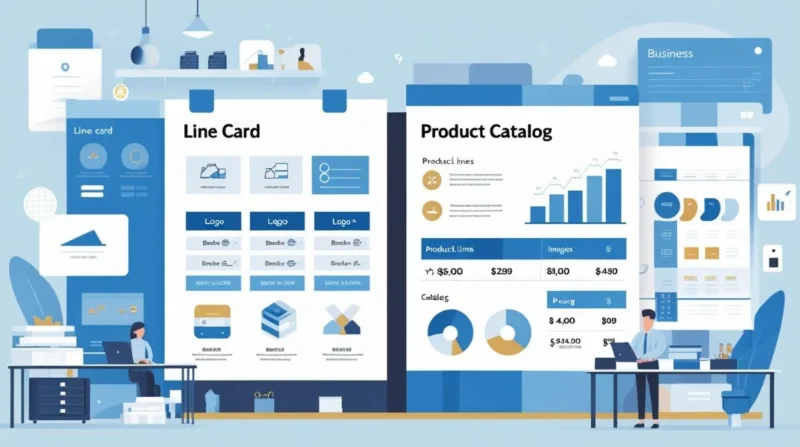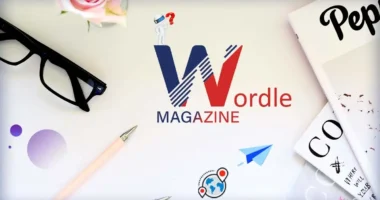Table of Contents
In the world of business, especially in sales and marketing, presenting your products effectively is crucial. Two common tools used for this purpose are the line card and the product catalog. While they might seem similar at first glance, they serve different purposes and are tailored for distinct audiences. Let’s discuss the key differences between these two tools to help you decide which one best fits your business needs.
What is a Line Card?
A line card is a concise document that lists the products or services a company offers. It’s primarily used by manufacturers, distributors, or sales representatives to provide a quick overview of their offerings. Think of it as a business card for your product lines.
Key Features of a Line Card
- Concise Listing: It provides a straightforward list of products or services, often categorized by brand or type.
- Contact Information: Includes essential contact details, making it easy for potential clients to reach out.
- Brand Representation: Often showcases logos of the brands represented, giving a clear picture of partnerships or affiliations.
- Targeted Audience: Designed for quick reference by buyers, procurement officers, or partners looking for specific product lines.
Line cards are especially useful in trade shows, sales meetings, or as part of a sales kit. They provide a snapshot of what a company offers without overwhelming the reader with too much detail.
What is a Product Catalog?
A product catalog is a comprehensive document that provides detailed information about each product or service a company offers. It’s designed to inform and persuade potential customers by showcasing the full range of offerings.
Key Features of a Product Catalog
- Detailed Descriptions: Each product is accompanied by specifications, features, benefits, and sometimes usage instructions.
- High-Quality Images: Visuals play a significant role, with professional photos highlighting product details.
- Pricing Information: Often includes prices, discounts, or promotional offers.
- Ordering Details: Provides information on how to place an order, return policies, and customer service contacts.
- Brand Storytelling: May include company history, mission statements, or customer testimonials to build trust and brand identity.
Product catalogs are ideal for end-users or consumers who want to explore all available options before making a purchase decision. They are commonly used in both print and digital formats, accessible via websites, emails, or physical distribution.
Comparing Line Cards and Product Catalogs
Understanding the differences between line cards and product catalogs can help you determine which tool to use in various scenarios.
Purpose and Use
- Line Card: Serves as a quick reference guide, ideal for B2B interactions where buyers need an overview of available product lines.
- Product Catalog: Provides in-depth information, suitable for both B2B and B2C contexts where detailed product knowledge influences purchasing decisions.
Content Depth
- Line Card: Offers minimal information, just enough to inform about the product range.
- Product Catalog: Delivers comprehensive details, including specifications, images, and pricing.
Design and Layout
- Line Card: Simple and straightforward, focusing on clarity and brevity.
- Product Catalog: Visually rich and detailed, aiming to engage and persuade the reader.
Update Frequency
- Line Card: Easier to update due to its concise nature.
wholesale4creatives.com - Product Catalog: Requires more effort to update, especially if it’s printed, due to the volume of information.
Distribution
- Line Card: Often distributed during meetings, trade shows, or as part of sales kits.
- Product Catalog: Shared through various channels, including websites, emails, physical mail, and in-store displays.
When to Use Each Tool?
Choosing between a line card and a product catalog depends on your audience and objectives.
Use a Line Card When
- Introducing Product Lines: You want to give potential partners or clients a quick overview of your offerings.
Indeed - Attending Trade Shows: You need a concise handout that highlights your product range.
- Engaging in B2B Sales: Buyers are looking for specific product lines or brands you represent.
Use a Product Catalog When
- Targeting End-Users: Consumers need detailed information to make informed purchasing decisions.
- Launching New Products: You want to showcase new offerings with comprehensive details and visuals.
- Building Brand Identity: You aim to tell your brand’s story and establish trust with potential customers.
Conclusion
Both line cards and product catalogs are valuable tools in a company’s marketing and sales arsenal. A line card is your go-to for quick, concise communication about your product lines, especially in B2B settings. In contrast, a product catalog offers a deep dive into your offerings, ideal for engaging consumers and providing them with all the information they need to make a purchase.









